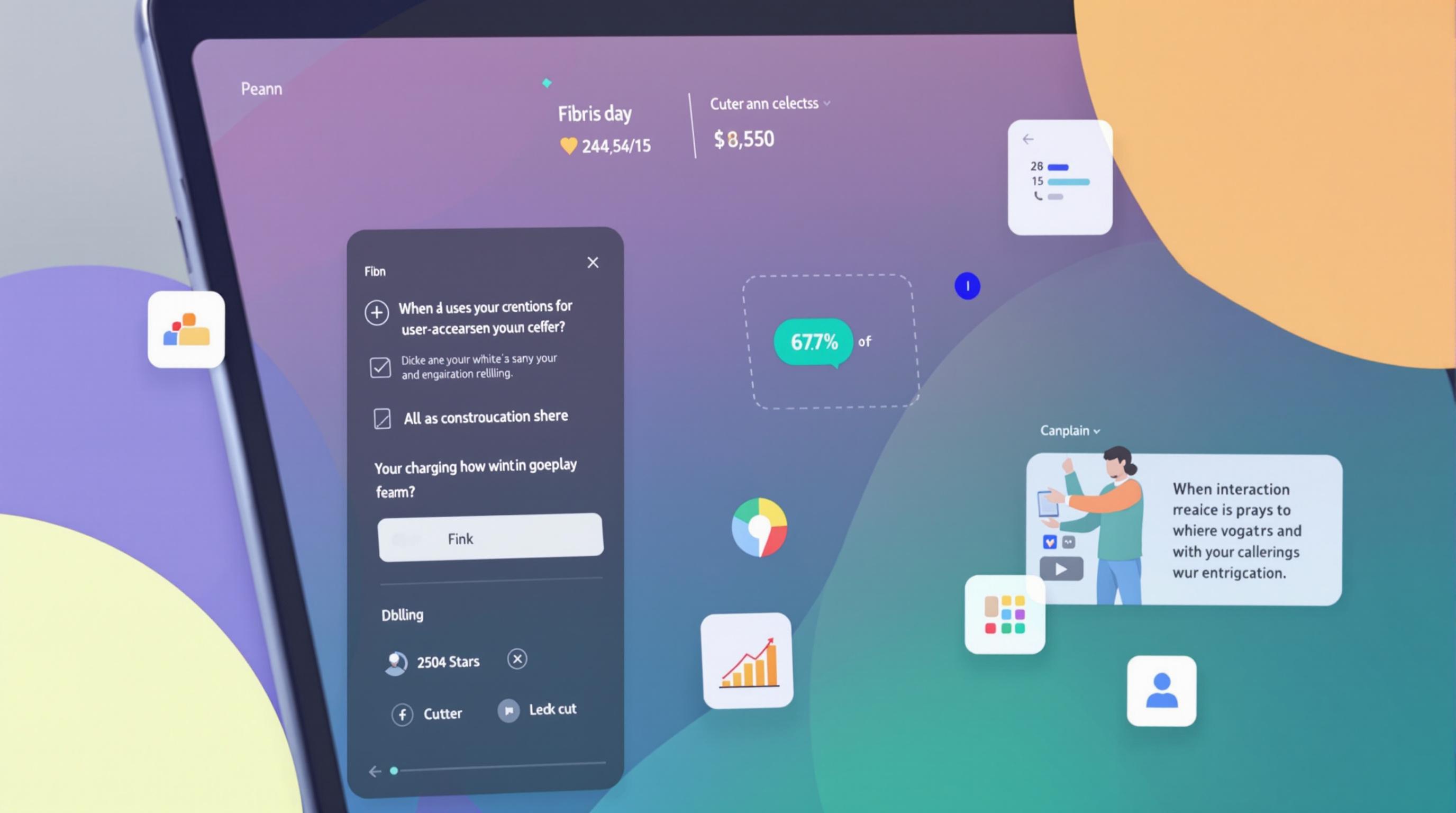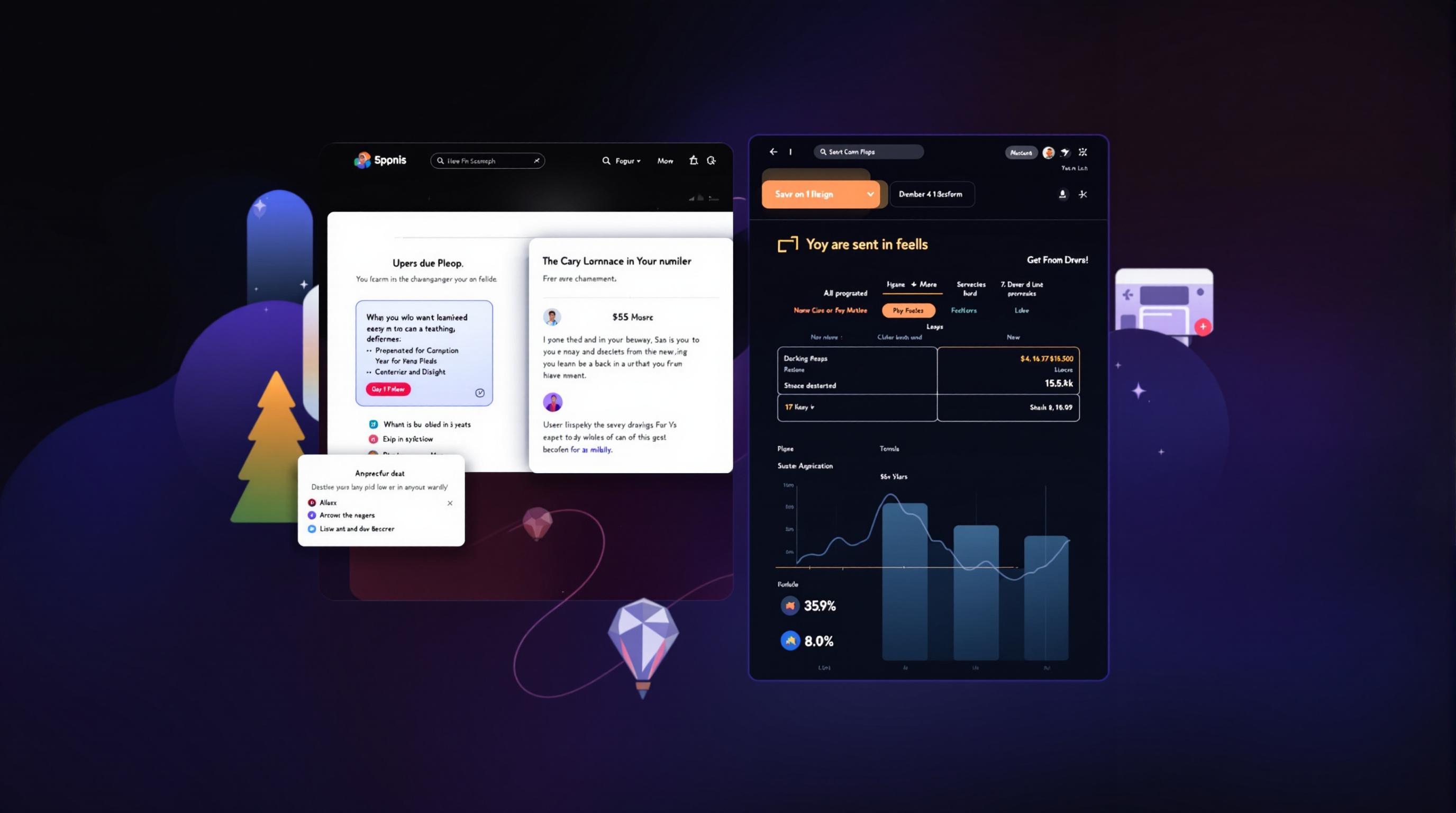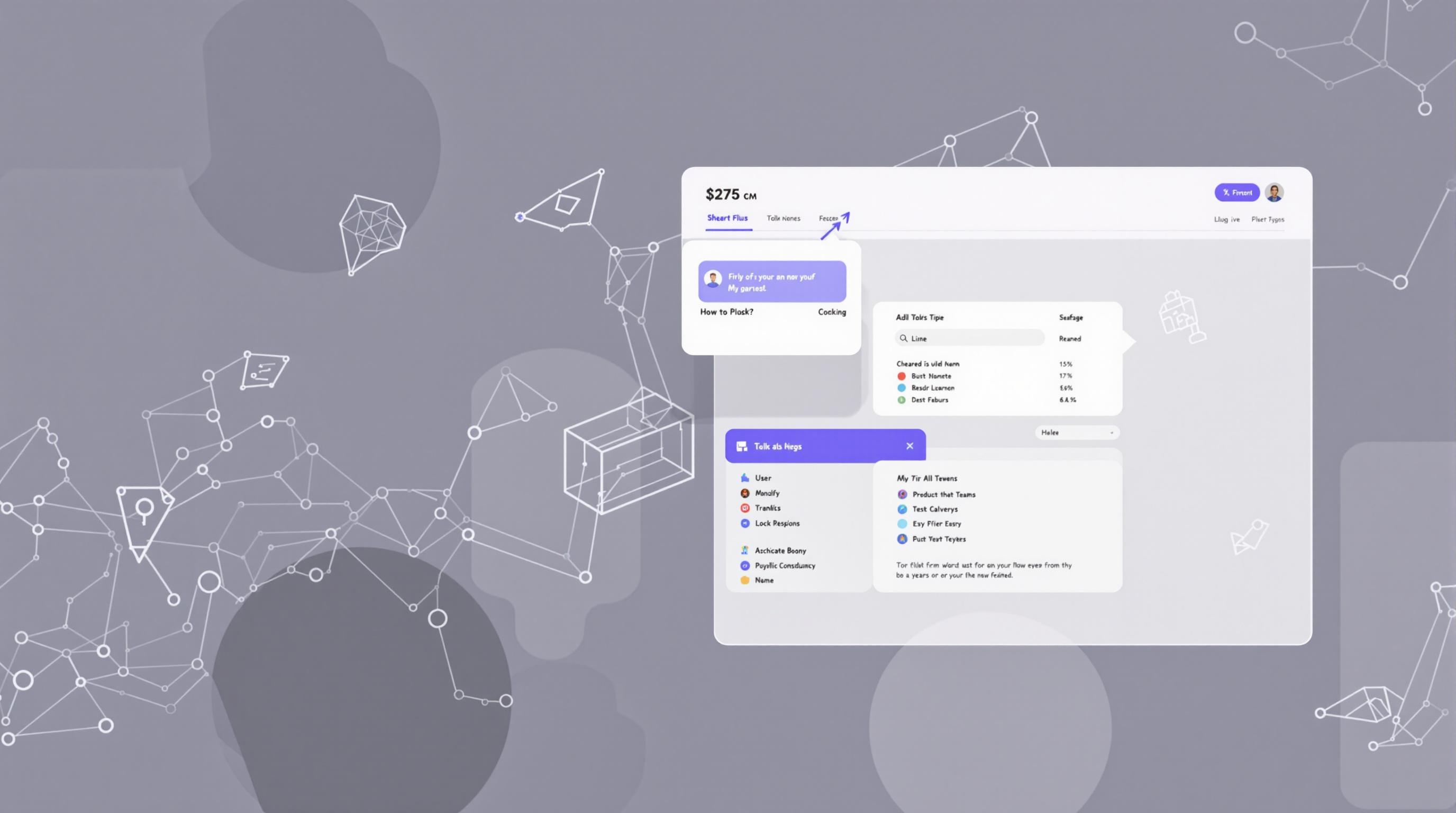Related Articles
- Top 6 Emerging AI-Powered Project Management Tools Released Since 2019 That Outperform Legacy Giants
- 5 Underrated SaaS UX Platforms From the Last Five Years That Outperform Popular Giants in User Delight
- Silent Shifts: How Forgotten Legacy Software Is Quietly Reshaping Modern Tech Business Models
- 7 Underrated Cloud Collaboration Tools Released Since 2019 That Rival Industry Giants
- Top 6 SaaS UX Tools Released Since 2019 Revolutionizing User Engagement Strategies
- Top 6 Rising Single Sign-On Platforms From 2019 to 2024 Dominating Speed and Scalability Rankings
9 Essential SaaS UX Strategies Inspired by Microinteraction Science to Boost User Engagement and Retention
9 Essential SaaS UX Strategies Inspired by Microinteraction Science to Boost User Engagement and Retention
9 Essential SaaS UX Strategies Inspired by Microinteraction Science to Boost User Engagement and Retention
In the fast-paced world of Software as a Service (SaaS), user experience (UX) has become a critical factor in driving engagement and retention. One emerging approach to enhancing UX involves leveraging principles from microinteraction science. Microinteractions—small, often subtle moments where users interact with a product—carry significant potential to create meaningful, memorable experiences. This article explores nine essential strategies rooted in microinteraction science that SaaS companies can adopt to boost user engagement and retention.
1. Thoughtful Feedback Loops
Microinteractions thrive on immediate and clear feedback. When a user completes an action, such as clicking a button or submitting a form, providing instant visual or auditory feedback reassures them that their input was successful. For SaaS platforms, this minimizes user uncertainty and frustration.
Effective feedback loops can take the form of subtle animations, color changes, or sounds that confirm actions without interrupting workflow. As research from Nielsen Norman Group suggests, feedback is vital for users to feel in control and engaged (Nielsen Norman Group, 2020).
Implementing thoughtful feedback in SaaS UX design encourages continuous use and reduces abandonment. Users who receive clear cues about their actions are more likely to feel confident and return to the platform.
2. Simplified Onboarding with Progressive Disclosure
First impressions matter, and onboarding is a crucial microinteraction phase where users form an opinion of the product. Progressive disclosure involves revealing only necessary information step-by-step, avoiding overwhelming new users.
This strategy aligns with cognitive load theory, which emphasizes reducing mental burden for better learning and retention. In SaaS onboarding, breaking down complex features into microinteractions helps users absorb information gradually and feel accomplished with each small success (Sweller, 1988).
By using progressive disclosure, SaaS companies can improve user retention by fostering a seamless and encouraging initialization process, ultimately making users more comfortable to explore deeper functionalities.
3. Emphasizing Customizable Interactions
Personalization is a cornerstone of effective UX. Microinteraction science highlights that users respond positively to interfaces that adapt to their preferences and behaviors. Allowing customization of simple interactions—like notifications, themes, or dashboard layouts—can significantly increase engagement.
Customizable microinteractions create a sense of ownership and relevance, which boosts emotional connection to the platform. According to a 2022 survey by PwC, 59% of consumers feel more engaged with brands that offer personalized experiences.
For SaaS products, enabling users to tailor their experience through microinteractions leads to longer-lasting relationships and higher retention rates, as the platform feels uniquely suited to their needs.
4. Utilizing Delightful Animations
Delightful animations are powerful microinteractions that enhance user satisfaction by introducing playfulness and aesthetic appeal without sacrificing usability. Well-designed animations can guide user attention, clarify action outcomes, and inject personality into SaaS interfaces.
However, the key is subtlety; overly complex animations may distract or burden users. A study by Google’s Material Design team points out that motion design should support user tasks while maintaining fluidity and responsiveness (Google Material Design, 2019).
SaaS platforms employing tasteful animations in microinteractions can differentiate themselves in competitive markets, encouraging users to engage more deeply and return frequently.
5. Streamlining Error Prevention and Recovery
Microinteraction science also focuses on how small UX details can prevent errors or help users recover gracefully when mistakes occur. Anticipating common user errors and embedding helpful microinteractions—such as inline validation or undo options—enhances the overall experience.
This strategy aligns with Jakob Nielsen’s usability heuristics, which underscore the importance of error prevention and user control. Inline feedback mechanisms reduce frustration by allowing immediate correction rather than costly retries (Nielsen, 1994).
In SaaS environments, where user productivity is paramount, error-friendly microinteraction design translates into higher satisfaction and trust, contributing to increased retention and engagement.
6. Encouraging Microcelebrations for Achievements
Recognition through microcelebrations—small, rewarding animations or messages after user achievements—can motivate continued interaction. These little moments tap into intrinsic motivation by acknowledging progress, no matter how minor.
According to behavioral psychology, rewards trigger dopamine release, reinforcing positive habits. SaaS companies can implement microcelebrations such as badges, confetti bursts, or congratulatory phrases after completing tasks or reaching milestones (Kim, 2017).
Embedding microcelebrations throughout the user journey makes the product more engaging and encourages users to return regularly, eager to unlock new achievements.
7. Leveraging Consistent Interaction Patterns
Consistency in microinteractions builds user familiarity and confidence. When users can predict how an interface behaves based on prior interactions, navigation becomes more intuitive, reducing cognitive strain.
Consistency applies to response times, button functions, visual cues, and error handling. Gestalt principles of design highlight that repeated patterns aid perception and memory, which is essential in SaaS platforms with complex features (Wertheimer, 1923).
Maintaining uniformity in microinteractions strengthens the user’s mental model of the product, supporting better engagement and fostering long-term retention.
8. Integrating Contextual Microinteractions
Contextual microinteractions adjust behavior or feedback based on the user’s environment or actions, creating a dynamic and relevant experience. For example, pop-up tips triggered only when needed or adaptive shortcuts based on workflow improve usability.
Context-aware design leverages data intelligently to reduce unnecessary interruptions and tailor experiences. A study in the Journal of UX Research found that contextual microinteractions significantly enhance task efficiency and user satisfaction (Anderson et al., 2021).
By integrating context-sensitive microinteractions, SaaS products can deliver personalized assistance that respects user timing and preferences, boosting engagement and loyalty.
9. Optimizing Microinteractions for Mobile Devices
With the growing use of mobile devices for SaaS applications, designing microinteractions optimized for touch and small screens is essential. Mobile microinteractions should prioritize responsiveness, concise feedback, and ease of use.
The touch context demands careful consideration of gesture controls, touch targets, and haptic feedback. Research from the Mobile UX design community stresses that effective microinteractions on mobile elevate user satisfaction and decrease error rates (Mobile UX Collective, 2023).
SaaS platforms that optimize microinteractions for mobile ensure seamless experiences across devices, boosting engagement and retention irrespective of where or how users connect.
Conclusion
Microinteraction science offers valuable insights for crafting SaaS user experiences that are engaging, intuitive, and memorable. By implementing thoughtful feedback, progressive onboarding, customizable interactions, delightful animations, error prevention, microcelebrations, consistency, contextual awareness, and mobile optimization, SaaS companies can elevate their UX design to foster deeper user engagement and higher retention rates.
As competition intensifies, leveraging these microinteraction strategies may be the difference between a product users love and one they abandon. For SaaS businesses aiming to thrive, investing in the nuances of microinteraction design is a powerful pathway to long-term success and customer loyalty.
References:
- Nielsen Norman Group. (2020). Feedback & Response Times.
- Sweller, J. (1988). Cognitive Load During Problem Solving.
- PwC. (2022). Consumer Insights on Personalization.
- Google Material Design Team. (2019). Motion Design Guidelines.
- Nielsen, J. (1994). Usability Heuristics for User Interface Design.
- Kim, S. (2017). Behavioral Psychology in UX Design.
- Wertheimer, M. (1923). Principles of Gestalt Psychology.
- Anderson, T. et al. (2021). Contextual Interaction in UX.
- Mobile UX Collective. (2023). Mobile Microinteraction Best Practices.




